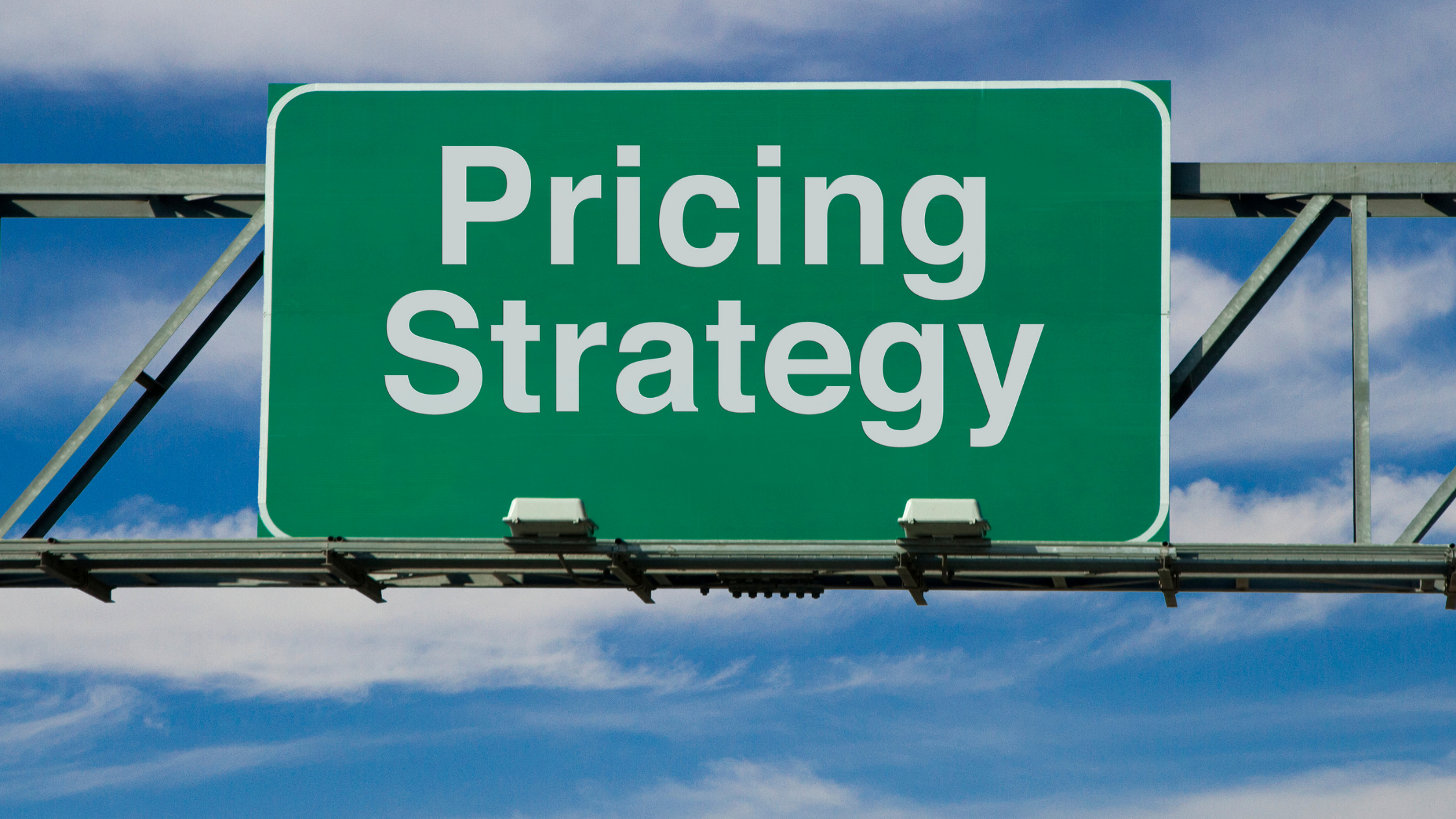“How do I learn about pricing? I just evaluated a competitor’s system, which our customer has asked us to replace. The competitor’s system, while not as robust as ours, three years ago cost the customer twice as what we would have charged. That, and similar examples, make me think it’s time to raise prices. Right now we have a backlog, so it’s a good time to change our pricing, as we could handle any fallout we might get from lower end customers.”
The tough thing about pricing is there’s no right answer. However ignoring pricing can get you into trouble, too. Pricing is all about securing the best profit, from the sale of your products. Notice I said profit, not revenue. Too often business owners focus on revenue, without enough regard to whether that revenue is translating into bottom line profit. Unprofitable sales will kill the business as fast, or faster, than not enough sales. Getting your price right will keep your business healthy, and provide fuel for future profitable growth.
You need to consider the role of each item you sell, as part of your overall mix of old, new, loss leaders and cash cows. Be sure that if you sell a product as a loss leader, it actually leads to new, profitable sales. Periodically freshen up the old reliable products, to keep customers interested. Don’t rely on cash cows too long, as they tend to dry up over time. Introduce your customers to new products or services, and help them to see how they can’t possibly do with them. As customer demand increases for the new products, raise prices accordingly.
One major factor in pricing is the customer’s role. Optimum pricing simply means you secure as many customers as you can handle, making as much money as the market will pay you, leaving as little on the table as possible. There is also a term called consumer surplus. That’s the money you leave on the table, the gap between what the customer was willing to pay and what you actually got them to pay.
You want to base prices on what the market will bear, rather than what it costs to deliver your product or service, assuming that what the market will bear is greater than your cost to deliver. To do that, you have to test prices, figure out at what price customers baulk, and then price right below that point.
Remember customers tend to run in herds. If you want to sell to a specific herd, find out what they’re paying today, and then set your price in the same ballpark. Differentiate on quality and options, not on price.
Remember, there is a strong relationship between price and quality. How many times have you heard, or experienced, the saying, ‘you get what you pay for’. Probably enough times to believe it. Keep that in mind when you’re setting your price. If anything, set your price at, or slightly above the competitive options.
One of the mistakes many business owners make is setting the price of their product or service too low. They mistakenly think that a low price will make the product easier to sell. Exactly the opposite may happen. Customers may question why the price is so low, and presume that the product has flaws, or is less robust than the competition’s.
Try to avoid using blanket discounts or sales, as a tool to spur activity. Once you’ve conducted one sale, customers are likely to expect another. Buyers may decide to wait to buy until you give in and hold another sale. And, to some potential buyers, sales are interpreted as a sign of problems.
What do customers pay a premium for? Great service. Great performance. Great results. No hassles. Personal satisfaction. Status. If you can provide any of these, you can charge a premium – unless your competitor beats you to it. In the case of our reader this week, the perception that his product provides superior results as compared to the competition may be worth enough to justify raising prices.
Don’t forget about switching costs. Once customers have invested in a product or service, they are twice as reluctant to give up and go elsewhere. If some of your prospects are afraid of dealing with switching costs, you can think about providing free services to get through the initial transition. Or, simply look for other prospects and wait for these potential customers to come around on their own.
You can use switching costs to your advantage once you have customers. Keep your ongoing support costs low enough that customers think twice about leaving you for another solution. Periodically announce enhancements that you give to existing customers at a cut rate, as a reward for sticking with you.
One of the best ways to set price is to create demand. If customers perceive that you have something unique, they are more likely to knock on your door. And if there are lots of prospects knocking on your door, you can pick and choose the best customers. You can afford to let the heavy negotiators go to your competitors. Marketing is your tool to create demand.
When considering marketing, focus on premium service and high quality, as the market typically will recognize and pay for that message. Back up your marketing efforts with high quality delivery, as it will only take a few breakdowns for word to get around that your marketing message is all hot air. On the other side, be sure your price is set high enough to warrant the premium you’ve advertised. Customers tend to distrust, or get confused by, a high quality / low cost approach.
Think past your customer to your customer’s customer. That’s where the real dollars are. Just like you, your customer probably wants more business. If you can help your customer to use your product or service to get more of their customers, that’s valuable!
There’s also linkage and bundling. If you’re selling a product in a competitive market, link it to a service geared to customers in that market. Bundle fees – one all inclusive price – so customers can’t calculate the individual unit prices. Then charge a premium because the bundle gets more results than either the product or service alone.
Figure out what your competitors are up to, and what your target market thinks about your competitors. To figure out how much room you have to raise prices, analyze the prospects in the marketplace. Get a handle on demand, before you try setting price. Our reader from this week did just that, and figured out that his company’s product is priced way below what his competitors are charging.
Here are some questions to ask, to figure out market demand.
For general buying trends: How many prospects are out there? What is the typical lifecycle of the product or service? How many prospects have never bought? How many bought so long ago that they’re about to exceed the product lifecycle on the previous purchase? How many have outgrown the product or service they originally purchased and are looking for something new? What else is competing for their attention right now?
For companies that haven’t bought for the first time: What would be likely to motivate them to buy? What else might they spend their dollars on? Where does your product or service sit on their priority list? And how important is it that they gain additional competitive advantage from a product or service such as the one your company provides?
For companies that have already bought once: What did they pay the last time around? How is their business and financial picture different from the last time they bought? How satisfied are they? How likely would they be to switch? What else are they looking for? And what would cause them to stay with their current provider?
You can get a lot of this information through customer surveys and industry trade organizations. Your own customers can help fill in a lot of the general information. Competitive profiles can help, as well.
You may want to analyze market segments. You may find that one industry has better margins, and is better able to afford your services. Put together a package of services, customized to that industry, and charge a premium for the package.
Now it’s time to define your pricing strategy. Figure out some rationale for segmenting your prices, according to what you believe customers can afford to pay, and what it costs to deliver your services. Typically, big customers can usually afford to pay more, smaller customers struggle to come up with big ticket purchases. Unfortunately, big customers tend to be more sophisticated buyers, better at negotiating, and sometimes get away with paying less than their fair share. Keep that from happening to you by marketing to a wide audience, having more prospects than you need, and being clear that higher volume consumers have to pay for the volume they consume.
You want to set some rationality to your pricing. You don’t want to charge every customer a different price. It gets confusing to implement and manage. And customers do talk and compare prices. The ones who paid a premium are likely to get upset if they think you took them for a ride.
Focus on standardizing prices as much as you can, even within segments, and then rewarding customers for taking actions that are to your benefit. For example, you may want customers to implement with you in specific months, such as your low period; give them something extra if they do just that. Some customers may be willing to lead you to other customers; provide a credit towards future services if they do. Some customers may be easier to deal with than others; say thank you by giving them complimentary service from time to time.
Like I said, there’s no right answer. The best bet is to annually assess where you are, in terms of profit, competitive position, marketshare, and growth opportunity. Assume you’re under priced, until the market tells you otherwise. Regularly adjust prices and strategies. Use pricing as a tool to grow your business, top and bottom line.
Looking for a good book? Try The Pricing Advantage by Michael Marn, Eric Roegner, & Craig Zawada.



